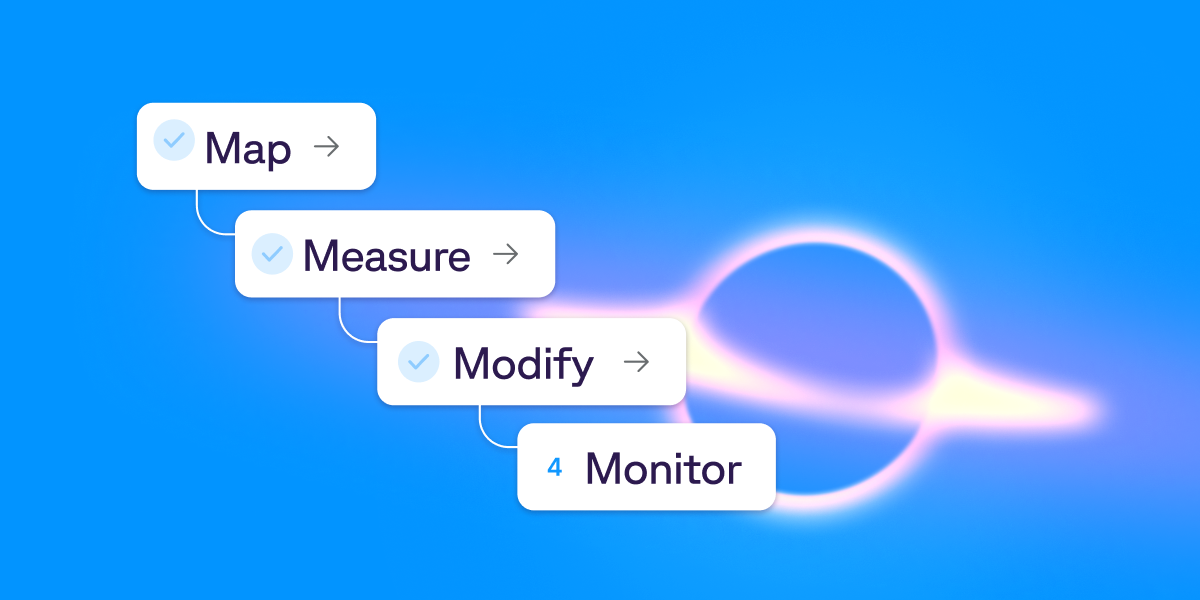“If you don’t know your business, your AI won’t either.”
That line captures what so many teams are grappling with: the pressure to “AI everything” without understanding how their systems actually work. Before handing things off to agents, we need to ask: what exactly are we handing over?
Most organizations don’t have a shared understanding of how their business runs. Documentation is outdated, processes have drifted, and systems only reflect part of the picture. That disconnect is a major blocker to effective Agentification.
It’s also the kind of problem Travis Skelly is focused on at Pruven Capital, where he backs AI-native startups that don’t just automate, but reimagine broken processes. That lens is what drew him to Sweep’s approach to modernizing Salesforce.
In a recent conversation, Travis shared a practical framework for how companies can get their systems and teams ready for agentic AI.
Map the mess
First, understand the system.
The biggest blocker to meaningful AI in go-to-market systems isn’t the lack of models, it’s the lack of clarity. GTM environments are messy: layered tools, patchwork processes, inconsistent data entry. Before automation can create leverage, teams need to see what’s actually happening.
When companies connect tools like Salesforce, HubSpot, and Netsuite, they expect deeper integration and automation. But what they often get is more confusion. Systems don’t talk to each other, data structures conflict, and process logic gets lost in translation.
“When you go across systems, they don’t speak to each other. You get overlapping data, conflicting logic. So which data takes priority?” said Travis Skelly. “Most teams don’t have a clear architecture or schema to answer that. And when you start layering in agents and automation, the gaps just get amplified.”
That’s why mapping matters. You need to see the full process, across tools, teams, and time, to understand what work is actually being done and where it breaks down. Otherwise, agents are just automating noise.
“If you had a data problem before, adding agents only makes it worse. Understanding the process is more important than obsessing over individual data entry points.” Travis explains.
Measure the work
Next, assess it.
Mapping the process gives you visibility. Measuring it gives you judgment.
Once teams can see how work really happens, across tools, steps, and stakeholders, they can start asking sharper questions: Where are we wasting time? Which handoffs fail silently? What’s worth automating, and what isn’t?
This is the moment where automation strategy either sharpens or falls apart. Too many teams race ahead without understanding what they're automating in the first place.
“You overpromise and underdeliver if you don’t fully understand what you’re trying to automate,” said Travis Skelly.
Agentic AI is powerful, but it’s not magic. You need defined processes, clear logic, and intentional design. Otherwise, you’re just automating confusion at scale.
Measurement is what draws the line between automation that performs and automating on noise.
Modify the process
Then, design for automation.
Once you’ve mapped and measured the system, the next move isn’t always to automate, it’s to rethink. Agentic AI works best when processes are clear, consistent, and well-scoped. If the underlying logic is broken, agents won’t fix it. They'll just expose it faster.
“The biggest misconception about AI in GTM is that it’s a cure-all,” Travis Skelly said. “Keep it close to known, well-defined processes and the results will be stronger. But don’t expect it to solve what you haven’t taken the time to understand.”
Ask bigger questions: Why does this process exist in the first place? What would it look like if you built it from scratch, with AI in mind?
“There are a million things we do that could be even better if the process was redefined,” Travis added. “Don’t just automate what exists. Ask what it would look like if you built it in an AI-native way.”
Automation is only as good as the process it’s built on. Redesigning with intent, simplifying where you can, rebuilding where you must, is how teams move from short-term gains to transformational outcomes.

Monitor and improve
It doesn’t stop at one-time fixes.
Processes evolve. Headcount shifts. Tools change. The market moves. What worked last quarter might quietly break next quarter. That’s why automation isn’t a one-and-done deployment, it’s a system that needs to learn, adjust, and improve over time.
Agentic AI is no different. Without clear feedback loops, it drifts. Without monitoring, it becomes brittle. The more critical the automation, the more important it is to build for change.
“Before setting off to build these systems and services, you need to understand how you’ll beat the incumbents,” Travis Skelly said. “A big mistake many in AI-land are making is assuming what they build will hold up over time, without planning for how it evolves.”
Sweep transforms your business system metadata into a visual workspace that both your team and AI agents can understand and act on. It uses process mining to map workflows, dependencies, and logic into a living model of your GTM systems, enriched with business context like automations, routing rules, and triggers. From there, Sweep’s agents help you modify what’s broken, suggest improvements, and continuously monitor your systems for opportunities to optimize and scale.
As Travis Skelly said: “You can’t automate what you don’t understand.”
Sweep gives your AI the context it needs, and your team the clarity it’s been missing.

